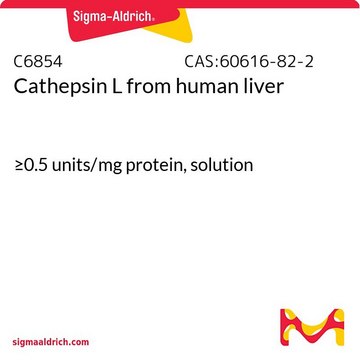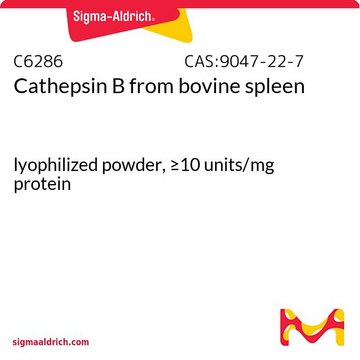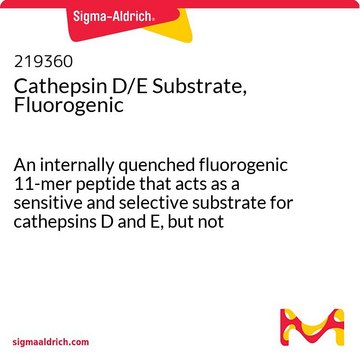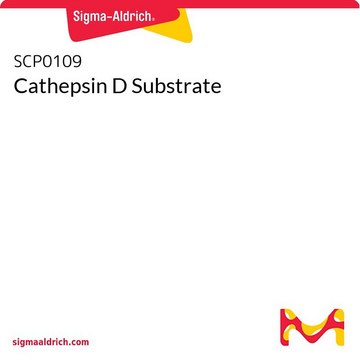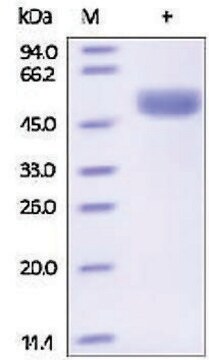C8696
Cathepsin D from human liver
lyophilized powder, ≥250 units/mg protein (E1%/280)
About This Item
Recommended Products
form
lyophilized powder
Quality Level
specific activity
≥250 units/mg protein (E1%/280)
mol wt
~45 kDa
color
white
UniProt accession no.
storage temp.
−20°C
Gene Information
human ... CTSD(1509)
1 of 4
This Item | SRP6415 | C8571 | C6854 |
|---|---|---|---|
| specific activity ≥250 units/mg protein (E1%/280) | specific activity - | specific activity ≥1,500 units/mg protein (E1%/280) | specific activity ≥0.5 units/mg protein |
| form lyophilized powder | form lyophilized | form buffered aqueous solution | form solution |
| UniProt accession no. | UniProt accession no. | UniProt accession no. | UniProt accession no. |
| storage temp. −20°C | storage temp. −20°C | storage temp. −70°C | storage temp. −20°C |
| mol wt ~45 kDa | mol wt calculated mol wt 43.6 kDa, observed mol wt 45-55 kDa (DTT-reduced. Protein migrates due to glycosylation. Ser 19 is the predicted N-terminal.) | mol wt - | mol wt - |
General description
Application
Biochem/physiol Actions
Other Notes
Unit Definition
Physical form
inhibitor
related product
Storage Class Code
11 - Combustible Solids
WGK
WGK 3
Flash Point(F)
Not applicable
Flash Point(C)
Not applicable
Certificates of Analysis (COA)
Search for Certificates of Analysis (COA) by entering the products Lot/Batch Number. Lot and Batch Numbers can be found on a product’s label following the words ‘Lot’ or ‘Batch’.
Need A Sample COA?
This is a sample Certificate of Analysis (COA) and may not represent a recently manufactured lot of this specific product.
Already Own This Product?
Find documentation for the products that you have recently purchased in the Document Library.
Customers Also Viewed
Our team of scientists has experience in all areas of research including Life Science, Material Science, Chemical Synthesis, Chromatography, Analytical and many others.
Contact Technical Service



